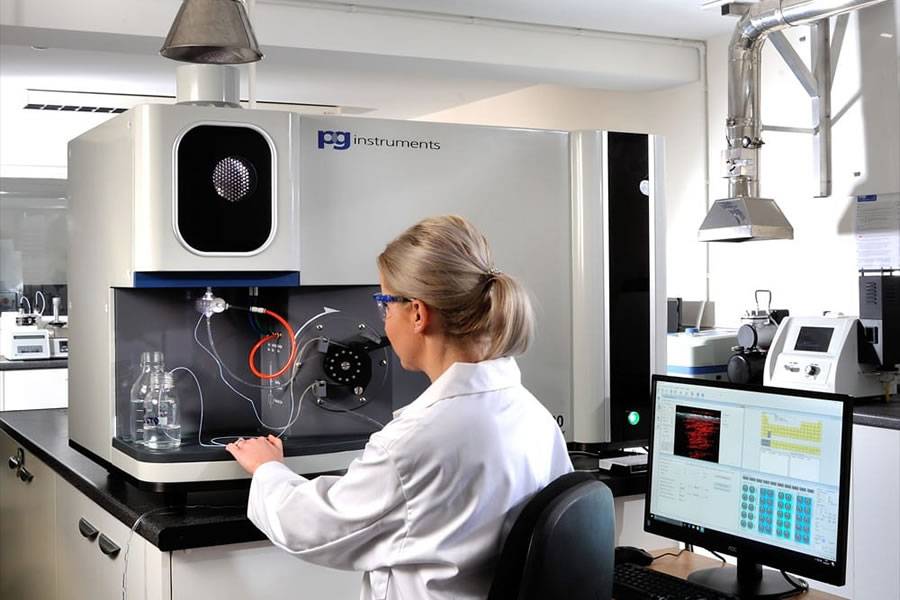5 key features to look for in a modern ICP-OES instrument
- 10-01-2025
- Business
- Sponsored Article
Inductively Coupled Plasma Optical Emission Spectroscopy (ICP-OES) is a powerful analytical technique for detecting and quantifying trace elements in various samples. Whether in an industrial lab, environmental monitoring, or academic research, selecting the right ICP-OES instrument is critical to ensuring accurate and efficient analysis.
With technological advancements, modern ICP OES instruments have enhanced features to improve performance, usability, and reliability. Here are five key features for choosing the perfect ICP-OES for your needs.
High Sensitivity and Precision
The core purpose of an ICP-OES instrument is to detect and measure trace elements with accuracy and precision. Modern instruments have highly sensitive detectors that can pick up even the faintest signals from low-concentration elements.
● Dual-view (axial and radial) plasma observation: Ensures flexibility in handling a wide concentration range.
● Advanced optics: Instruments with enhanced optical systems provide sharper spectral resolution and minimise interference.
● Low detection limits: A high-quality ICP-OES should reliably detect elements at sub-ppb (parts per billion) levels.
Choosing an instrument with high sensitivity ensures reliable results, even for complex matrices.
Ease of Use and Automation
Laboratory workflows demand efficiency, and modern ICP-OES instruments are designed with user-friendly features to save time and reduce manual intervention.
● Intuitive software interfaces: Look for streamlined software instruments that offer step-by-step guidance for method development and data analysis.
● Automated calibration and sample introduction systems: These features reduce human error and improve consistency in results.
● Plug-and-play components: Simplified hardware setups, such as automated torch alignments and quick-connect nebulizers, make maintenance hassle-free.
User-centric design reduces the learning curve, making the instrument accessible to experienced and novice operators.
Enhanced Speed and Throughput
Speed is essential for labs handling high sample volumes. Modern ICP-OES instruments are designed to maximize throughput without compromising accuracy.
● Simultaneous multi-element analysis: Instruments capable of analysing multiple elements at once significantly reduce analysis time.
● Rapid sample introduction systems: Ensure faster measurement cycles, especially for routine testing.
● High-speed data processing: Advanced computing capabilities allow for near-instantaneous generation of results.
Instruments with enhanced speed are ideal for industries like environmental testing, food safety, and pharmaceutical analysis, where quick turnaround times are critical.
Robustness and Durability
ICP-OES instruments are significant investments, so durability and reliability are non-negotiable. Modern designs are tailored for long-term use in demanding laboratory conditions.
● Corrosion-resistant components: Given the use of aggressive acids in sample preparation, opt for instruments built with corrosion-resistant materials.
● Stable plasma systems: Instruments with robust plasma generators ensure consistent performance even during extended operation.
● Low maintenance requirements: Features like self-cleaning torches and minimal consumable usage reduce downtime and overall operational costs.
A robust design ensures consistent performance over time, minimizing disruptions in your workflow.
Environmental and Cost Efficiency
Sustainability is a growing concern in modern laboratories, and ICP-OES manufacturers have responded with environmentally friendly and cost-effective designs.
● Reduced argon consumption: Modern plasma systems are designed to operate efficiently, reducing the reliance on expensive argon gas.
● Energy-efficient systems: Instruments with energy-saving modes help reduce operational costs.
● Waste minimisation: Look for systems with optimised exhaust and waste-handling designs to minimise environmental impact.
Choosing an energy-efficient and cost-conscious ICP-OES aligns with both financial and sustainability goals.
Conclusion
Selecting the right ICP-OES instrument involves evaluating its sensitivity, ease of use, speed, durability, and environmental impact. By focusing on these five key features, you can ensure that your investment meets current analytical needs and remains relevant as your lab grows.
Whether you're testing for trace metals in drinking water, analysing geological samples, or performing quality control in industrial applications, a modern ICP-OES with advanced capabilities will deliver reliable, high-quality results.



























































